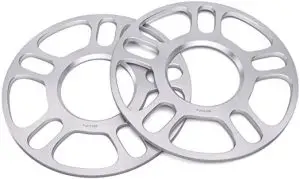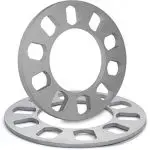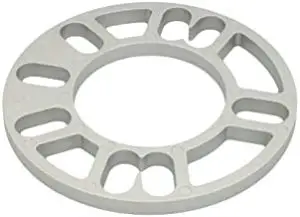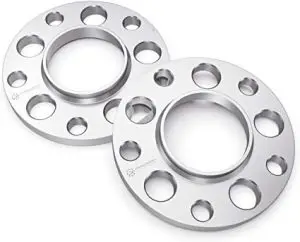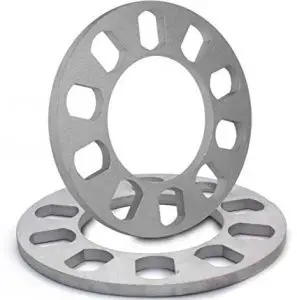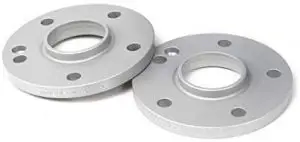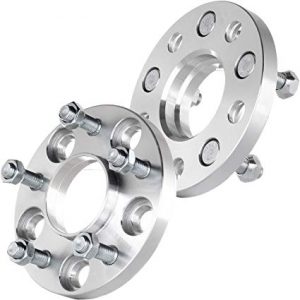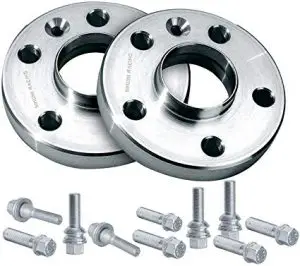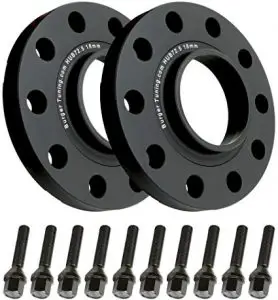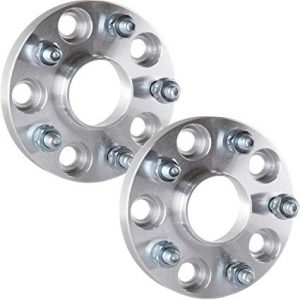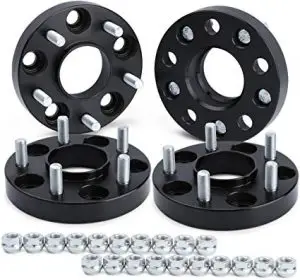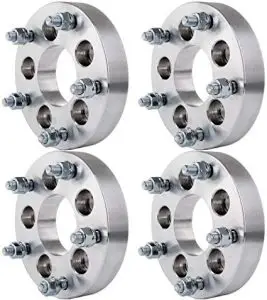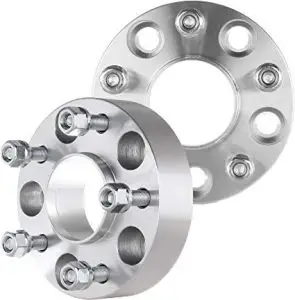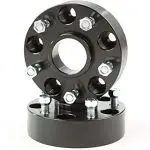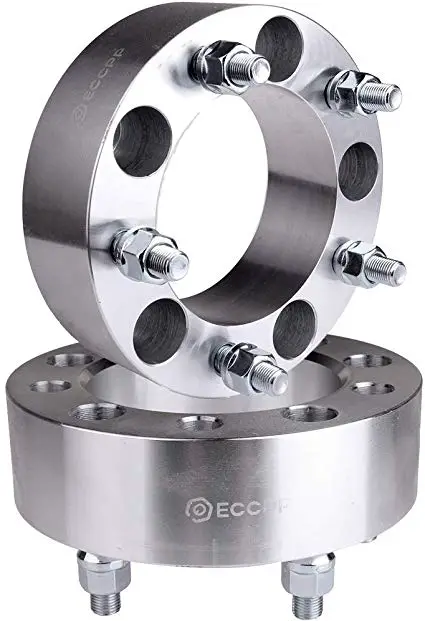![]() Select Wheel Spacers on Amazon
Select Wheel Spacers on Amazon
Why Use Wheel Spacers
You can work with wheel spacers, whilst your wheel disks and auto-tires is in the same bind. They place a convenient location between the hub and rim. On the face of it, spacer tuning appears hard going, but on practice, you need just a few hours to do it.
You are on the right track for choosing high-class wheel spacers for rims because below we drilled down the top ones. We demonstrate our point of view and impressions.
How Wheel Spacers Work
From the previous part, it’s clear that wheel spacers are an economical way to get wider the vehicle wheel tread. They prove effectiveness with racing cars for many a long day. We base our suggestions on long-term usage of the best ones for trailing axle applications increasing the wheel tread to suit custom wheels forward axle.
Hub Centric
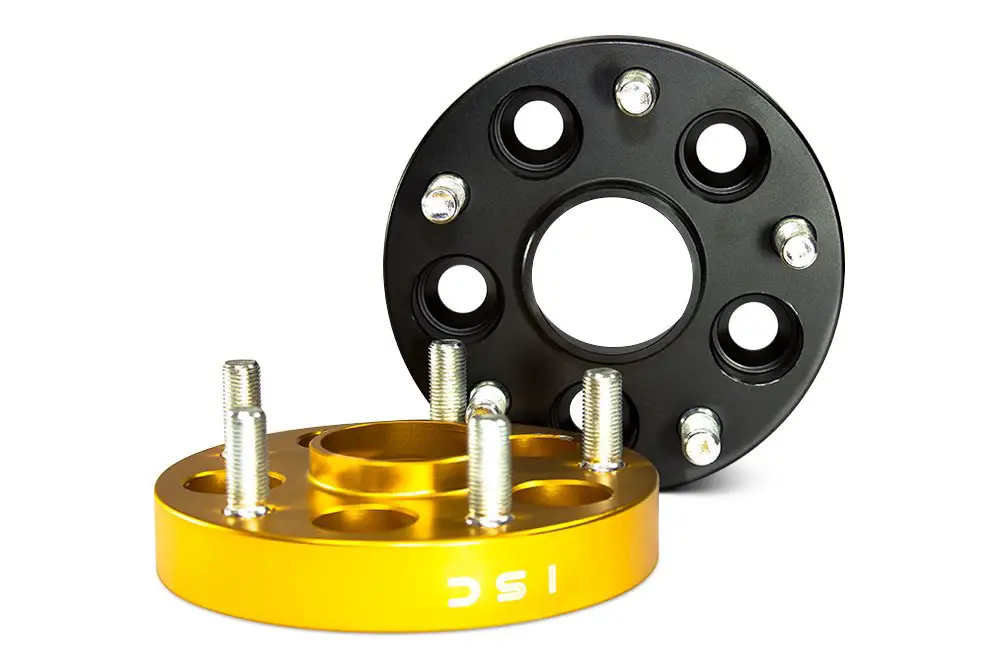
Now we can see every OEM provides the hub centric wheels suit only to fit exact model or lineup. The manufacturer ideally selects the center bore of the wheel for the axis of a particular car. The connection called hub centric because of wheel links with the axle hub and centers. The wheel hardly attaches the mounting plate, but in fact, the wheel and axle both hold the vehicle weight.
It is essential to realize the lug-nuts control cross-axis force which causes the wheel-plate disconnection in its turn. While the vehicle weight positions down, impact force goes up the hub-center bore forces is in a direction normal to the forces lug-nuts control.
Lug Centric
Both OEM and aftermarket pay attention to hub diameter of wheels before everything else. Task success depends on the axle size which has to suit the hub diameter. The aftermarket solves this problem by making hub diameter as large as possible. This helps to increase the number of models the wheel fits. But the hub doesn’t likely fit flush with an axle. It turns out that the lug but not the hub centers the wheel. Some experts claim that if lug nuts can adequately center the wheel, you will not notice the difference. But in fact, they are far from truth. You enjoy easy driving right up to the first impact when the shearing force and forces at 90 deal thoroughly with lug studs and lugs. Lugs can bend under the force and provoke vibration in the car. This distracts the center bore of wheels in contact with an axle.
In this case, hub centric spacers come to the aid of the market. They have different outer and inner diameters in size to fit the hub to the required size, which exactly corresponds to the axle. It forms a lug centric in hub centric one. You will definitely meet aftermarket tuners who claim that they install only hub centric wheels.
This means they choose the right spacers and don’t have various hub diameters for each case. If you choose a proven online or offline wheel shop, get the right matching spacers with the fitment package. Such stores sell spacers themselves or collaborate with the spacer seller. But in any case, don’t think they try to sell you unnecessary additional details.
How To Install Wheel Spacers
- Pick wheel spacers suitable for your car. Don’t look for identical spacers in similar models.
- Next stop your auto on a smooth, firm floor. Raise it, and until after unscrew the lug nuts, but not vice versa.
- After the car goes up, remove one wheel. Be sure to substitute the jack stand, but don’t use just the automotive jack in any case.
- Finish the tire removal process. Fresh lug nuts by a de-oiler and a patch, if they are dirty. Rusty hub is possible to clean and rub with a wire brush. Repeat rubbing until the parts are smooth.
- Put a little Loctite on the spacer. Place the spacer exactly opposite a hub. Hitch a spacer and a hub with bolts. Using tension indicator find the correct torque specification. Try not to wrench off the bolts. In the case of a hub turning, ask an assistant to break to stop the hub.
- Fasten basic lug nuts to a spacer. Give them adequate torque specification. Wrench off the bolts in a diametrically staggered pattern. Lift a car and take off the auto jack. Let down your vehicle.
- Perform parts 3-6 again for every wheel.
- Control the lug nuts hardness after a while, because the studs can somewhile fail and pack up.
Hub Centric VS Lug Centric
If you install aftermarket disks, you need to remember that their center bore may be rather than a hub ID. You won’t get a hub centric wheel as it seems to be along of a far cry between the diameters. Most likely you don’t see the gap, but during driving, you will notice shimmy.
In this instance, you need to purchase a kit of hub centric rings to fill the remaining space for a more tight fit. We recommend HubCentric Rings native Project Kics which have any size to live up to your expectations.
Another reason to use hub centric rings is an ability to install OEM rims on another auto with a lesser hub diameter and a suitable bolt pattern. Among the main advantages of the “washer method” are the small cost, installation only on the axle of one wheel, work performance in all conditions, even on a trip.
How To Choose The Best Thickness And Offset
For both lug-centric and hub centric wheel spacers, you have to find the balance between thin and thick ones. It’s really the problem to get the right thickness. The brake clearance and fenders are unlikely your end goal. The aftermarket offers all kinds of spacers, with thickness varying from 1/8 to 1. We fully realize the matter of the size. You should know exactly what thickness you need. A deviation of 1/4 or even less can cause irreparable harm.
Read More on Wheel Offset here.
How To Determine Size Of Wheel Spacer For Your Vehicle
The spacer thickness differs in each individual case and depends on your own settings. You need to match the washers in according to their ID, which has to be the same as bolt one. In fact, the washer’s ID provides better passing thanks to the slightly increased ID. Washers vary between 1/16″ and 3/16″. For one stud you string a few washers. You need about eight washers for a standard wheel with five bolts. We know the 50-washers cases for one stud. However, don’t worry prematurely because the price of the 50-ones box is rock-bottom (little more than $5).
More than that after temporary usage you can find the application of it. For doing a better job just use similar washers. You definitely have to measure wheels and tires parameters to appreciate how deeply you need to put the wheel. But it is not easy. Get ready to redo it repeatedly. If you choose to go the other way and just order several thicknesses to choose, it is also a failure. But we have cheering news for you. Some efforts, time and money become necessary for you. We are sure you have different sizes of the appliance shop type washers. You can also check out the product range if you don’t have them at home. You only need flat metal washers. Take washers with a rather big internal hole, that lug bolts, and your vehicle studs go through. Then you place suitable washers instead of wheel spacers.
Tips For Vehicles With Lug Bolts
We advise you to follow our method even if your car gets lug bolts which fixate to thread opening. You have got to prepare a great many washers. Here place washers on the second wheel side after bolts fixing.
Tips For Vehicles With Lug Nuts
The method key-note is fixing a small subset of washers on every stud. Start testing the wheel after the first washers. It is better to add one by one at heat and not to forget to monitor the results. Moving the wheels is the last thing you want to do unless you aim to break the parts.
But what is the best thickness? Most panelists tend to believe the optimal thickness of clearance goes between 1 and 3 millimeters. Some alternative experts suggest that adequate thickness should be like a sheet of paper. In reality, you have to stop at the smallest thickness at which clearance can clear.
Q/A
Are wheel spacers legal?
Customizing wheels with the help of wheel spacers is legal in the United States. For now, there are no federal laws restricting the use of wheel spacers.
Nevertheless, some manufacturers play safe and try avoid possible issues with the law by marketing their goods for off-road exploitation only.
The US Department of Transportation’s regulations do not provide any guidance for the use of wheel spacers. You might want to consult the local and state governments to be 100% sure.
Are wheel spacers safe?
The short answer is “yes”. Wheel spacers are a definitely save upgrade for your vehicle. You can drive safely on wheel spacers as long as you opted for quality instead of trying to save a penny on cheap copy cats from China. To avoid possible damages buy well-known spacers brands from responsible sellers.
Another possible pitfall is the wrong installation. Be sure to follow the instructions or simply outsource this task to professional mechanics.
